What are Perennial Weeds?
Perennial Weeds are longer lived plants that can survive winter or regrow from roots, rhizomes or tubers in spring after a period of dormancy. Many weeds that grow from seed ...

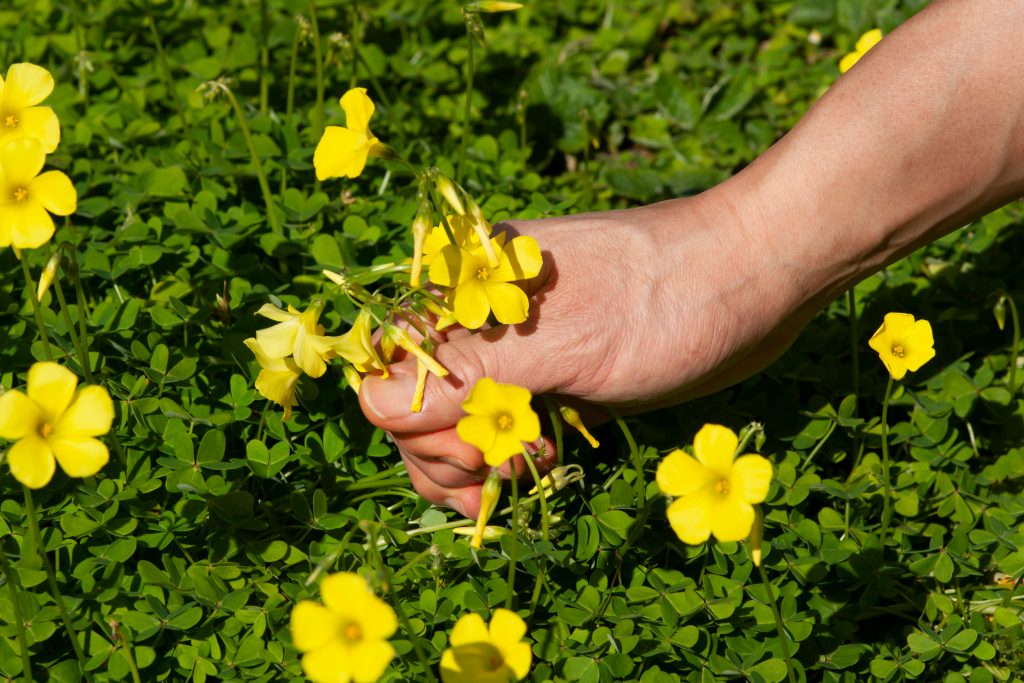 Also known as Sour Grass and Bermuda Buttercup, Soursob is an extremely annoying fast-spreading weed.
Also known as Sour Grass and Bermuda Buttercup, Soursob is an extremely annoying fast-spreading weed.
Soursob is sometimes confused with Clover – they have similar trifoliate leaves with three heart-shaped leaflets – but vastly different flowers.
The Soursob flower is usually yellow, has five petals and produces no seed. Plants reproduce by developing an underground network of small bulbs off a long tap root.
Soursob is often introduced to gardens in contaminated soil brought in for garden beds or for top dressing lawns.
Unfortunately, Soursob is highly competitive and invasive and can be very difficult to eradicate once it has taken hold.
Soursob can appear in autumn and winter. It usually flowers from late spring but has been known to flower throughout the year.
Soursob often forms a dense mat and can take over large areas, suffocating any plants growing underneath.
The roots of Soursob creep through lawns and the weak stems can make it impossible to pull up the entire plant.
Even if you can pull out the tap root, new plants will grow from the small bulbs left behind.
Take action before Soursob flowers because that’s when it produces more of those small bulbs that can generate new plants.
 It is possible to hand remove Soursob from your lawn but the process is slow, laborious and will likely take a year or two of sustained effort to succeed.
It is possible to hand remove Soursob from your lawn but the process is slow, laborious and will likely take a year or two of sustained effort to succeed.
Mechanical removal also relies on you finding and removing all the bulbs which can easily break off the main root.
Regular mowing can weaken Soursob plants and encourage your lawn to compete against them.
The best time to manually remove Soursob is just before flowering when the plant is weak, the root is young and thin and the bulbs are shrivelled.
Use a sharp spade to dig up plants when they’re small. Leave a generous margin around each Soursob plant and make sure you go deep enough to capture all the roots and any bulbs.
There are several herbicide sprays on the market that are suitable for managing Soursob.
Depending on the maturity of the plants and how large an area is affected, it may be necessary for you to spray more than once.
Glyphosate can be effective on Soursob, but as a non-selective herbicide it will poison everything it touches, including your lawn. Overspray of glyphosate is especially toxic to Kikuyu and Buffalo lawns.
It is safer to use a selective herbicide and Soursob plants must be actively growing and not under stress for any herbicide to work properly.
The best time to spray is just before flowering, when older bulbs have put all their energy into the flowers and new bulbs haven’t yet been able to grow.
Pre-emergent herbicides can be used to control Soursob prior to the weed’s emergence in late summer to early autumn. An example of a pre-emergent liquid herbicide is Barricade 1L which is suitable for use on Zoysia, Kikuyu, Buffalo and Couch grasses.
Another option is a pre-emergent herbicide and fertiliser product, such as Oxafert, that not only aids in controlling Soursob but fertilises your lawn at the same time. Again the ideal time for applying this pre-emergent herbicide and fertiliser is late summer to early autumn.
If you miss the window of opportunity to apply your pre-emergent herbicide, than a straight liquid herbicide such as Bow and Arrow is a great choice, can be applied later in the year and is safe to use on Zoysia, Kikuyu, Buffalo and Couch grasses.
Before applying any liquid herbicides with your spray equipment, check the weather forecast to avoid spraying before frost or during windy conditions. Also note that it may take up to six weeks for plants to die after spraying.
Always read the safety directions and instructions on the product label before use.
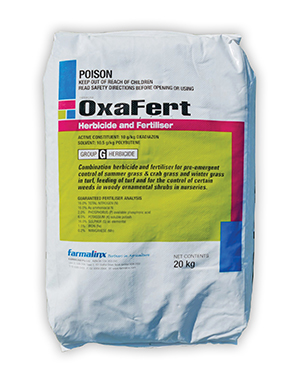
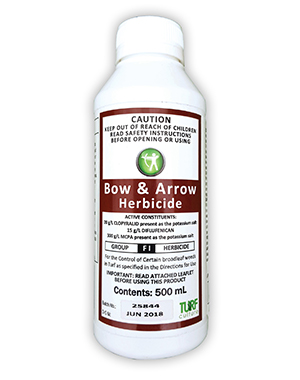
Bow and Arrow 500mL is one of the most effective broad leaf liquid herbicides on the market. Bow and Arrow 500mL is suitable for Zoysia, Kikuyu, Couch and Buffalo grasses however transient discolouration may occur on Kikuyu, Carpet and Queensland Blue Couch lawns. Always read the safety directions and instructions on the product label before use.
SHOP NOW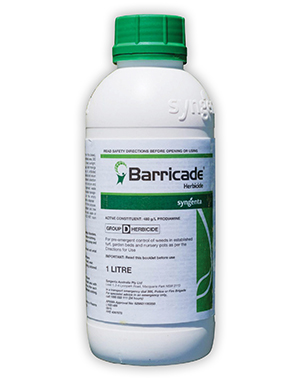
Barricade 1L is a pre-emergent liquid herbicide that controls a wide range of weeds and is suitable for use on Zoysia, Kikuyu, Buffalo and Couch grasses. Always read the safety directions and instructions on the product label before use.
SHOP NOW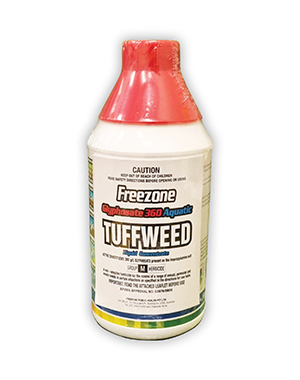
TUFFWEED Liquid Glyphosate 1L super concentrate is a non-selective herbicide that combats the toughest of weeds. Before use always check to see if your lawn variety is suitable for the use of TUFFWEED Liquid Glyphosate 1L. Always read the safety directions and instructions on the product label before use.
SHOP NOWEnsuring you have a strong, healthy lawn provides the best defence against infestation by weeds such as Soursob.
Soursob prefers slightly acidic soils with a pH of about 5. Raising the pH to about 7 – a neutral level that suits most turf varieties and garden plants – will help make the environment less attractive for weeds.
You can test soil pH with a DIY kit available from nurseries and hardware stores, or you can send a soil sample away for analysis at a specialist laboratory.
You can increase pH by adding agricultural lime, dolomite or poultry manure. Another positive effect of boosting pH is the way it makes many soil nutrients more readily available to the lawn and plants you do want to grow.